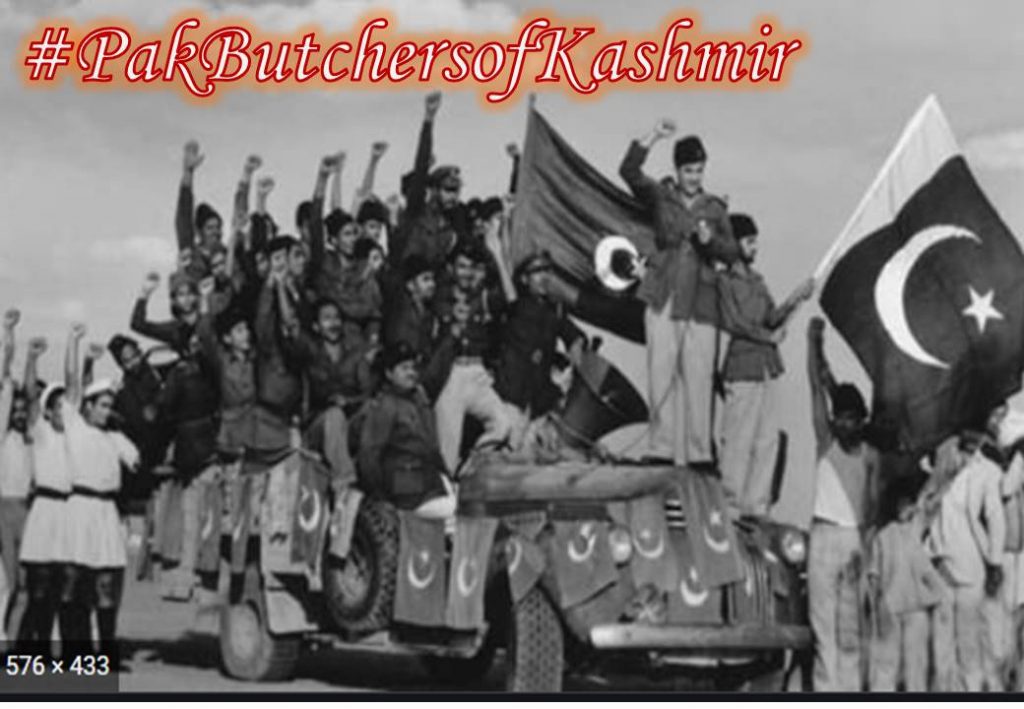The Kashmir we see today is the culmination of several disruptive and disturbing events that occurred across the valley, precisely two months after independence, in October 1947. The Kabaili (tribal) Attack, which apparently seemed a tribal raid, in reality, was not just a raid, but an invasion planned by Pakistan. Maharaja Hari Singh’s request to the then Indian government to save Kashmir from the attacks, and the subsequent signing of accession are a few most critical ones. Although it’s been 74 years since the action, the Kashmiris dread the attacks, and the entire chronology of events remains well engraved in everyone’s mind!
Last Week of October 1947 – Raid on Kashmir
Masterminded by the Pakistani Army and spearheaded by Akbar Khan, a senior Pakistani Army officer, an attack comprising the Pathan tribesmen was launched against Kashmir. By the last week of October 1947, approximately 5,000 of them had entered Kashmir.
Progression of the Attack
The attackers, equipped with modern military gear, traveled through Pakistan. Their first encounter was with a battalion of the Dogra troop in Muzaffarabad. They captured the bridge between Muzaffarabad and Domel on the same day. In the next couple of days, the invaders took over Chinari and Garhi. After that, the main group of attackers headed towards Uri.
Contribution of Brigadier Rajinder Singh and His Force
In Uri, the force led by Brigadier Rajinder Singh fiercely held back the tribesmen. Although the brigadier sacrificed his life while battling against the troops, he and his force helped the Maharaja avoid the capture and provided the Indian government enough time to plan and arrange for troops to counter the invaders. After the encounter, the tribesmen penetrated further to reach Baramulla.
Maharaja Hari Singh’s Departure to Jammu
On October 24, Hari Singh wrote a letter to the Indian government and awaited its response. A meeting of the Cabinet’s defense committee was held in Delhi, after which VP Menon, Administrative Head and Secretary of the States Department, was told to fly to Srinagar on October 25.
The situation in the valley had worsened significantly. The capital did not have any forces to guard it against the attackers, who, by then, were dangerously nearby. Accordingly, VP Menon’s priority was to take the king and his family out of Srinagar safely. So, the Maharaja left for Jammu by road.
Troops Land in Srinagar
October 26 marked a significant day in Kashmir’s history. After a cabinet defense committee meeting, the government decided to send two companies of troops to the J&K capital. Menon flew to Jammu.
Instrument of Accession
Then happened the signing of the accession. Hari Singh was not left with any option but to accede to India, should he want to stop the invasion with the help of India. He signed the accession with a regret that the attack did not allow him time to decide whether the state should remain independent or merge with India or Pakistan.
October 27
Sheikh Abdullah was given the charge of the emergency administration in Kashmir. The former Kashmir PM N Gopalswamy Ayyangar, who played an instrumental role in creating Article 370, was appointed as the cabinet minister to manage Kashmir affairs.
Kashmir, which has had a violent history after independence, remains a subject of fierce debate. The several skirmishes that have happened all along have claimed many lives, with the most recent ones being the death of 11 people, including Muslims, Kashmiri Pandits, Sikhs, and five migrant workers. Nevertheless, we hope for peace across the valley in the future.



